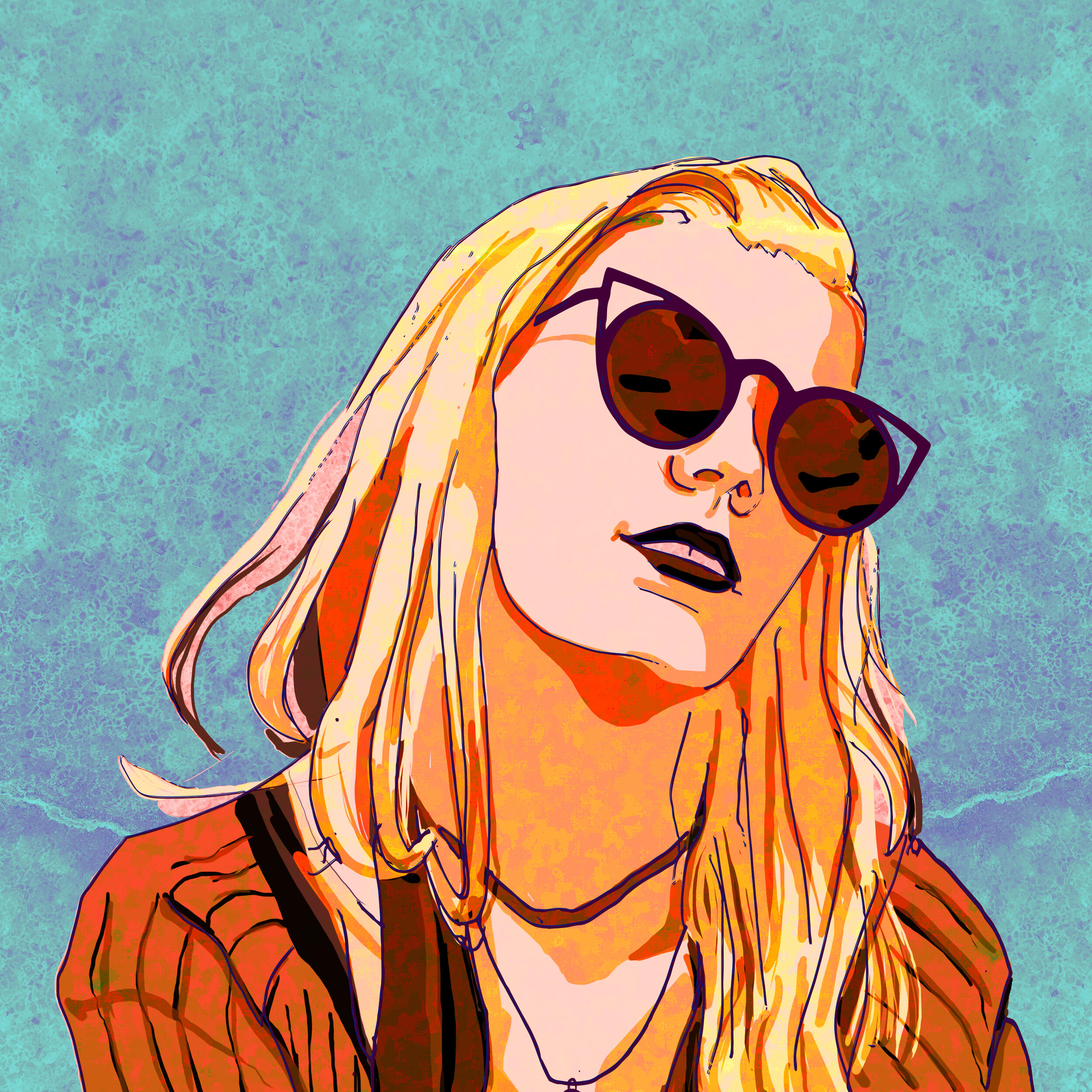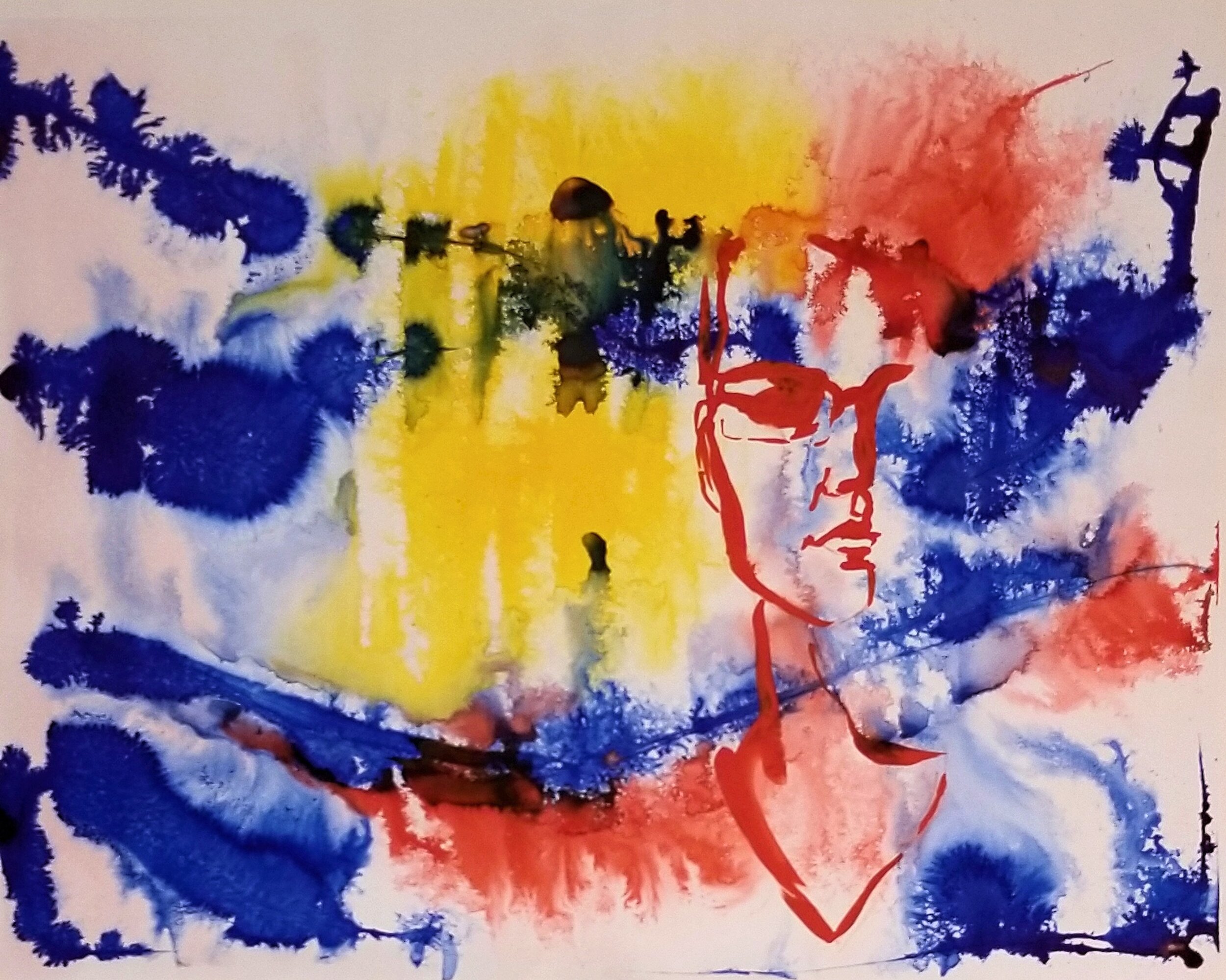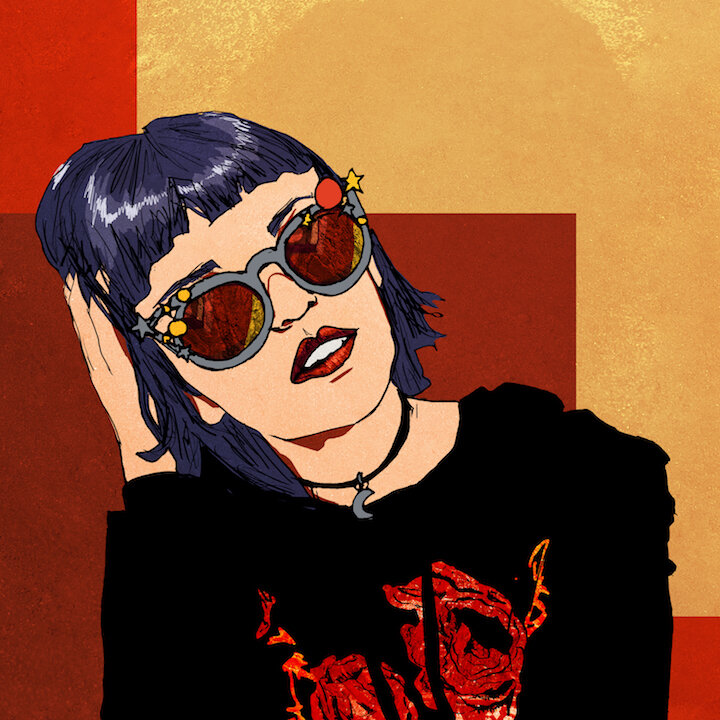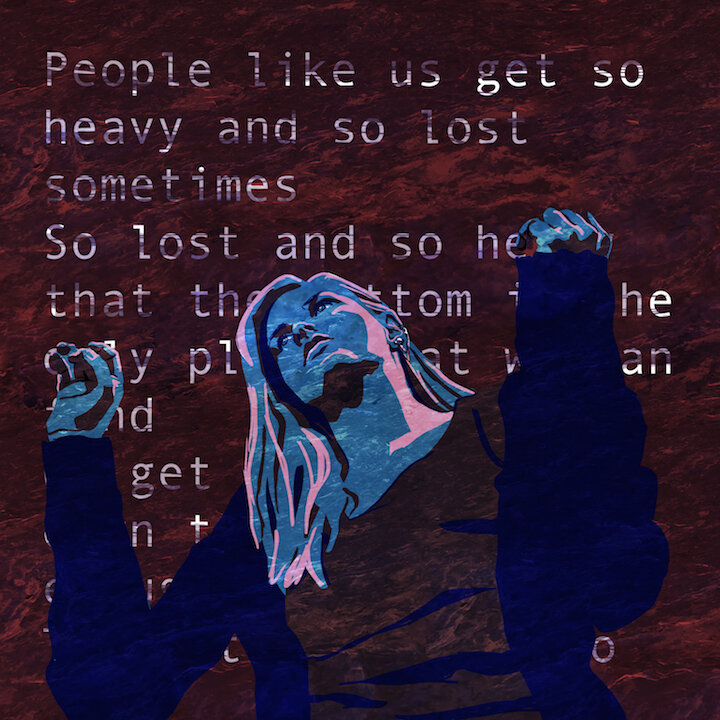In Conversation With Lily Ann Elingson
Lily Ann Ellingson’s art rejuvenates sensibilities borrowed from Pop Art. Her deep pastel colors and black outlines add to the genre’s rich oeuvre. Lily has yearned for artistry from a young age and began her exploits as a dancer. In her early teens she pivoted to visual art. Recently she graduated from the University of Utah with a BA in studio art with an emphasis in drawing. Inspiration gained from various life experiences such as traveling to new lands, and the loss of a relationship are at the heart of Lily’s work. Her pieces contain a bleeding sense of vulnerability that can only be attributed to a master artist.
A few months ago Lily graced Salt Lily Magazine with her presence and shared with us her process and inspirations.
When did you start making art?
I actually started well, when I was a little kid, I always wanted to be an artist. I remember finding an old yearbook from like, second grade where it had a place about what you wanted to be, and I said an artist in it. Then in 7th grade, I started taking oil painting classes with my mom's cousin. I did not like them, actually, they were really hard. Then in eighth grade, I had a class where I learned how to do black and white drawing. It was the first time it kind of clicked, how to make things look like what they look like, which is really exciting. I loved that and I started just like, going for it constantly. Kind of just drawing whenever I wanted to. I've just always really loved the arts in general. Painting and drawing has always been an area where I felt like I had some sort of command over it, you know, I could do what I wanted to with it. I could work on the things that I didn't know how to do in a more, like, measured way. It wasn't just like, like dance where like, I didn't exactly know what I needed to fix, you know, and I needed to like work on things that were kind of outside of my control of it.
If I recall correctly you studied ballet for a number of years.
Yeah, I did ballet for a really long time. I did modern dance with the University of Utah, which was awesome. I loved that. Dance has an expiration date of when you can stop doing it. After that, you have to teach. I had to kind of consider what I wanted to do more seriously, painting and drawing was the one that called out to me the most.
Did dancing influence your visual art at all?
I would say so. When you do art for a while you want to get down into the things that you really care about. So dance is something that's always been on my radar. I'm very inspired by choreographers and their work. I do love the idea that there is a kind of conversation between them [visual art and dance].
How would you describe your style?
I am really interested in color. Color is something that I've been trying to work on to be more intentional with. Because it's very easy when you're trying to paint a landscape or paint something that you're seeing to just copy it, you know. I've been really interested in making more deliberate choices. I definitely find a lot of inspiration in poppy art right now. That has very saturated colors or very unreal colors, and very strong shapes. So I would say when I make work that I'm the happiest with it, it fits kind of into more of a graphic Pop Art feel.
Who are some of your artistic influences?
Elizabeth Payton, she's the coolest. She does very beautiful portraits. In that same vein, Monet. His color choices were baffling. The color choices are completely unlike anything you would come up with, if you were not actively thinking about color and how it affects a viewer and how it affects the work that you're making. Both of them have an impressionistic style. When I paint, I definitely tend more towards an impressionistic style. But it's also a lot harder for me to make choices that don't end up being boring. I end up having to throw in loops for myself, like putting in pattern paper or something that I have to respond to . I also love collage multimedia stuff.
Can you describe your creative process?
It’s different for every piece. For the pieces, I felt the most connected to I did an extensive amount of sketching. I definitely do drafts and drafts of pieces that are important or when I’m trying to say something in a piece. I have sketchbooks that have lots of pages of notes and write out what I think different things would mean or what I think I should do. Lately, I've gotten kind of into typography and things like that. I took a letterpress class and, and I've also recently started doing digital work where it’s easier to make a choice. So that’s where the process of writing it out comes down. I write down as many variations as possible so I can get one that’s the most simple and the least distracting from what I'm trying to say. Which usually means vague. I think that's true of most art that I really enjoy. I think people respond to his art that ends up like coming from a specific place, but getting vaguer as it goes. I think people respond to art that ends up coming may be from a specific place, but getting vaguer as it goes. One reason I picked art is because, with art, you can explore anything else. So something that has been a hallmark of my art making is me learning something, or reading like a paper or something and getting really interested in just sitting with that idea for a while. Until eventually it's able to make its way out in a piece.
Did studying art academically change your style?
I definitely think that that can happen. I think it is a problem with art. I think there's a lot of value in the natural tendencies people have when making art, and they kind of grind those out of you. You do also have the opportunity to ask yourself, why am I doing this? So I feel like, for me, it's just made me more intentional about like, if I'm going to quote another painting, if I'm going to cite another style, why am I doing and what does it mean for what I'm making. It's made me a lot more conscious of my audience and the fact that my art will be interpreted, which is good. As well, just the rigor of the program has developed my art more than I ever could have on my own.
You served your mission in Chile and studied for a bit in China. Did traveling abroad influence your art at all?
It definitely influenced my style but it also influenced the way I interact with landscape. The way people relate to land, or the way people see land, has a lot to do with who they are, I believe. I would not be nearly as interested in landscape or understand why people do it constantly without those travels. I did a series a while ago, that was about how places define you. Chile, of course, came up in a big way. I think, just in a simple way, the art connections that you make, and the people that you meet are an influence. It's nice to get exposure through things that are not from just my point of view, or the point of view of the people in the area I live in.
What is your favorite piece you’ve created?
It’s a piece called ‘Lived and Re-lived.’ It's one that was dealing with some feelings after a particularly hard breakup. The relationship had lasted about a year, I had written a lot during that time in my journal about this person. The piece is two-three by three squares. One of the squares is just everything I ever wrote about him in my journal. I did it with ink with a brush so that I could make it blurry so you couldn't exactly read it, but it's a really small type. It took forever. It was actually really painful, not painful because of the subject matter, just like so boring. I would say I did describe it as being radical vulnerability. I like art that is about obsession too. I felt like I had the handwriting the whole time because it was the thing that most meshed. I needed to stick to it, even if it was painful for me. The second panel is a white square with a little rose in the middle, like a regular-sized rosI feel like the writing side evokes a lot of anxiety and obsession. And then the other part feels very lonely to me. The white background and just this little flower in the center.
You can see more of Lily Ann Ellingson’s work on her Instagram.









